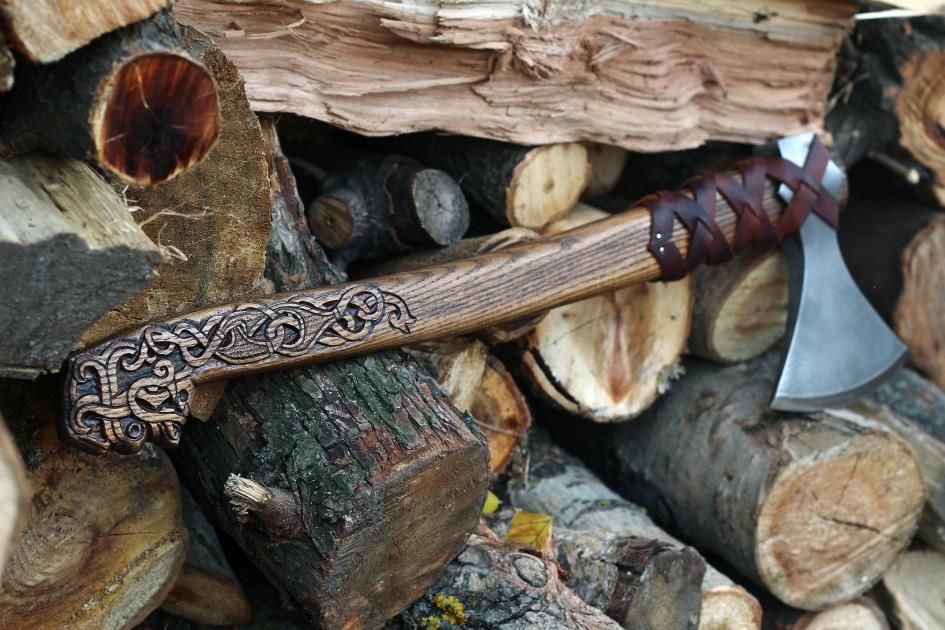Battle Axes in Art and Literature: The Symbolic Tapestry of Viking Culture
Introduction:
Viking battle axes, with their lethal prowess and intricate designs, held a significant place not only on the battlefield but also in Norse sagas, artwork, and literature. This analysis delves into how Viking battle axes are portrayed in these creative expressions, offering insights into their symbolism and cultural importance.
Section 1: Norse Sagas and Literature:
- Epic Exploits: In sagas like the “Saga of the Ynglings” and “Saga of the Volsungs,” Wikinger axt are frequently wielded by heroic figures to demonstrate their strength, courage, and prowess in battle.
- Symbolic Engravings: Battle axes are often used as symbols of destiny and fate, as seen in Egil Skallagrímsson’s saga, where a battle axe stands as a metaphor for the protagonist’s life and struggles.
- Weaponry and Identity: Literary works depict warriors’ emotional attachment to their battle axes. Axes are frequently named, personalized, and passed down through generations, representing a connection between warriors and their ancestors.

Section 2: Artistic Representations:
- Stone Carvings: Viking age runestones and carvings frequently depict warriors wielding battle axes. These engravings emphasize the prestige and valor of warriors who wielded these weapons.
- Illuminated Manuscripts: In illuminated manuscripts like the “Book of Kells,” Viking warriors with battle axes are depicted in intricate detail, showcasing the weaponry’s cultural importance and their role in historic events.
- Ornamentation and Adornments: Battle axes were often embellished with intricate patterns and inlays. These decorative elements not only showcased craftsmanship but also symbolized the warrior’s status and allegiance.
Section 3: Symbolism and Cultural Significance:
- Power and Valor: Depictions of warriors wielding battle axes often emphasized their strength and bravery, reinforcing the Viking ideals of martial prowess.
- Protection and Spirituality: Battle axes, especially those adorned with protective symbols, could be seen as amulets offering spiritual safeguarding in both battle and daily life.
- Narratives of Legacy: The portrayal of battle axes in art and literature reflects the Viking belief in legacy. Stories of heroes wielding these weapons live on as cultural markers of courage and honor.
Conclusion:
Wikinger axt, as depicted in Norse sagas, artwork, and literature, serve as intricate threads woven into the cultural tapestry of the Viking Age. They symbolize more than mere weaponry; they embody the values of courage, honor, legacy, and the profound connection between warriors and their cultural heritage. Through these creative expressions, battle axes transcend their physical form, becoming timeless symbols that continue to captivate and inspire.


